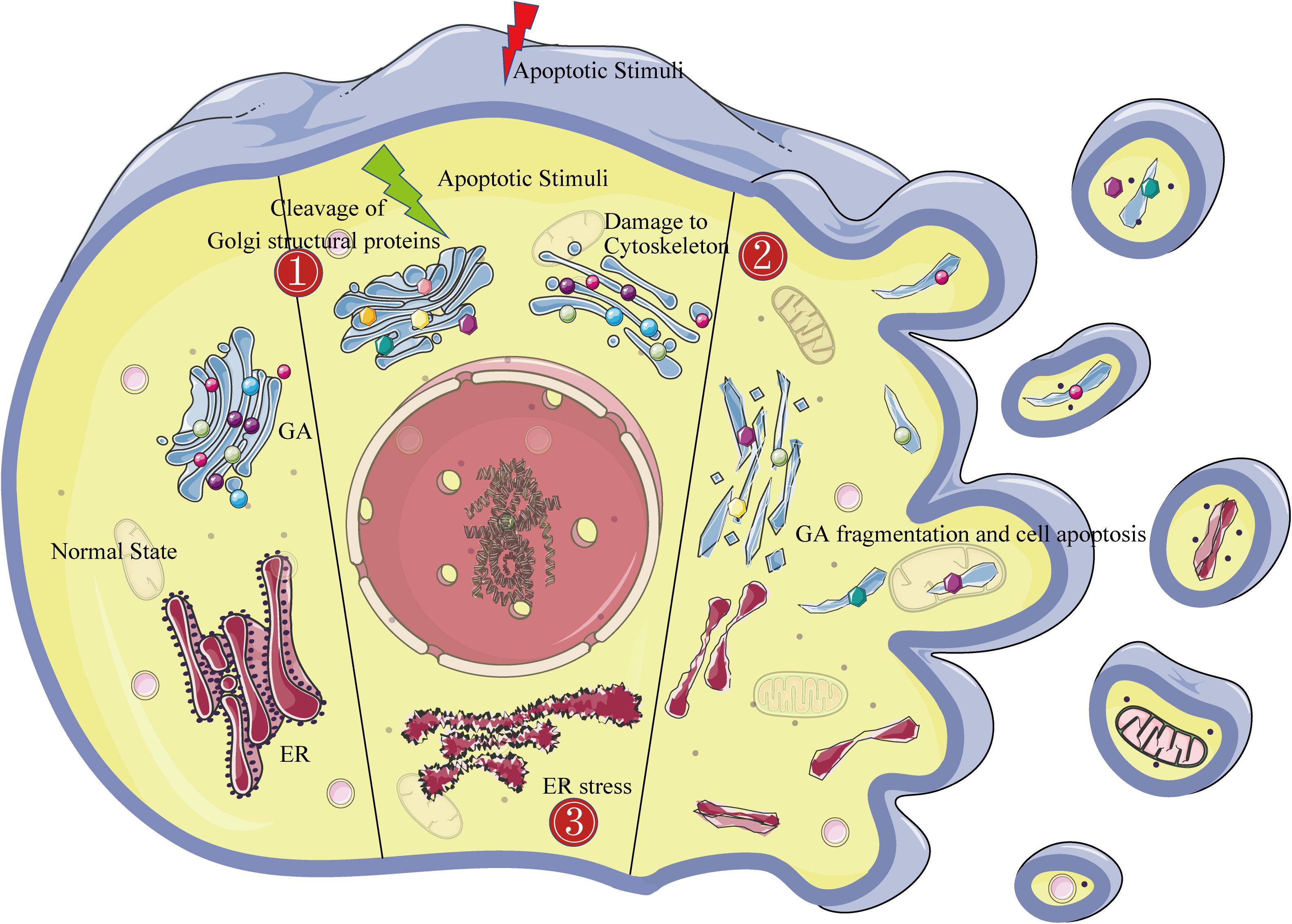
Frontiers The Golgi Apparatus May Be a Potential Therapeutic Target
The Golgi apparatus of plant cells consists of about 10-20 individual subunits that found scattered throughout the cytoplasm. Each individual subunit is called a dictyosome or Golgi body or Golgi stack. The zone of clear cytoplasm surrounding a Golgi body is called zone of exclusion (Fig. 3.31). Each dictyosome is about 1 -5 µ m in diameter.
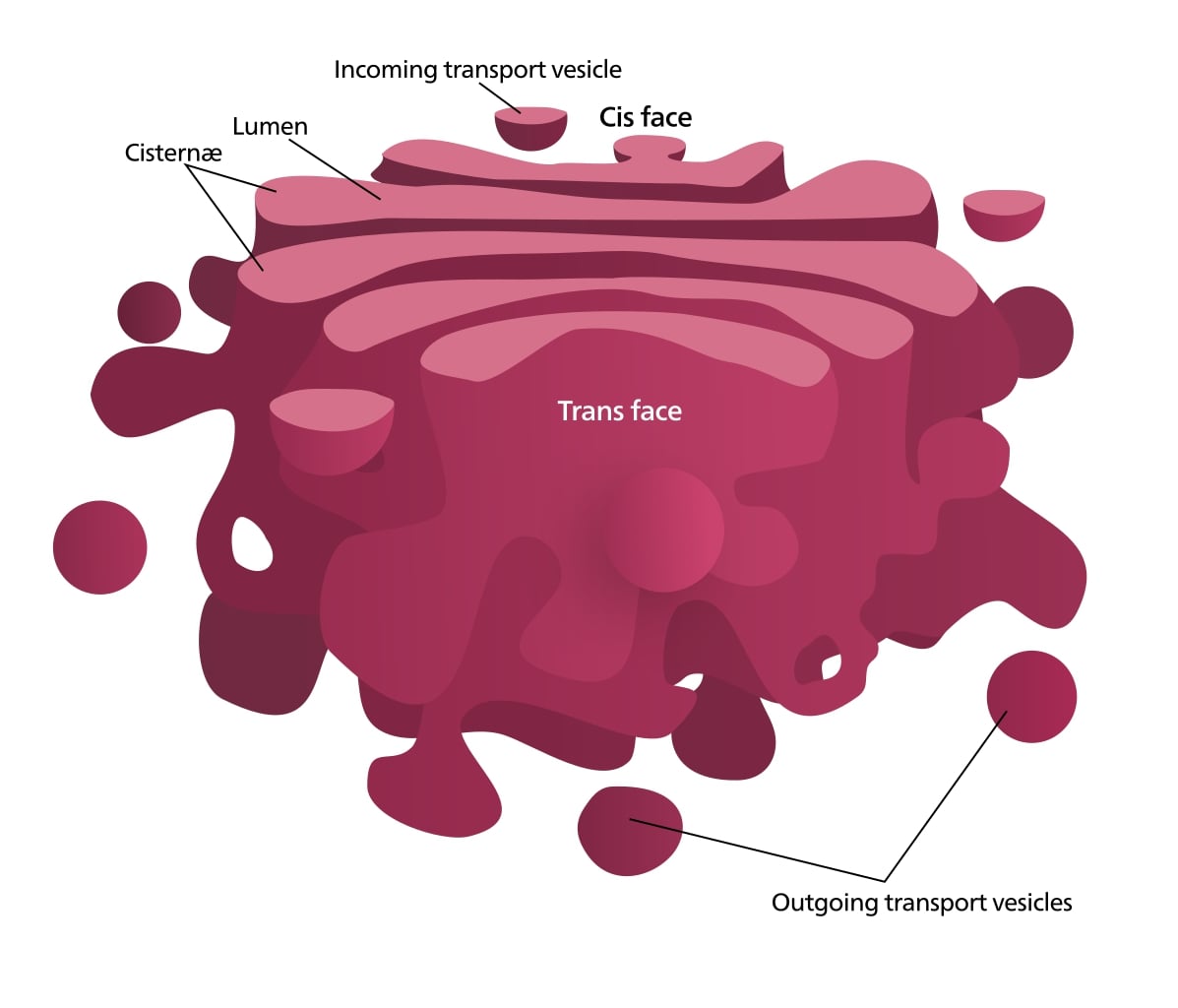
Golgi apparatus characteristics, structure and functions
Golgi Apparatus consists of flat, disc-shaped sacs or cisternae of 0.5µm to 1.0µm diameter. These are stacked parallel to each other. The Golgi cisternae are concentrically arranged near the nucleus. They have distinct convex cis or the forming face and concave trans or the maturing face.
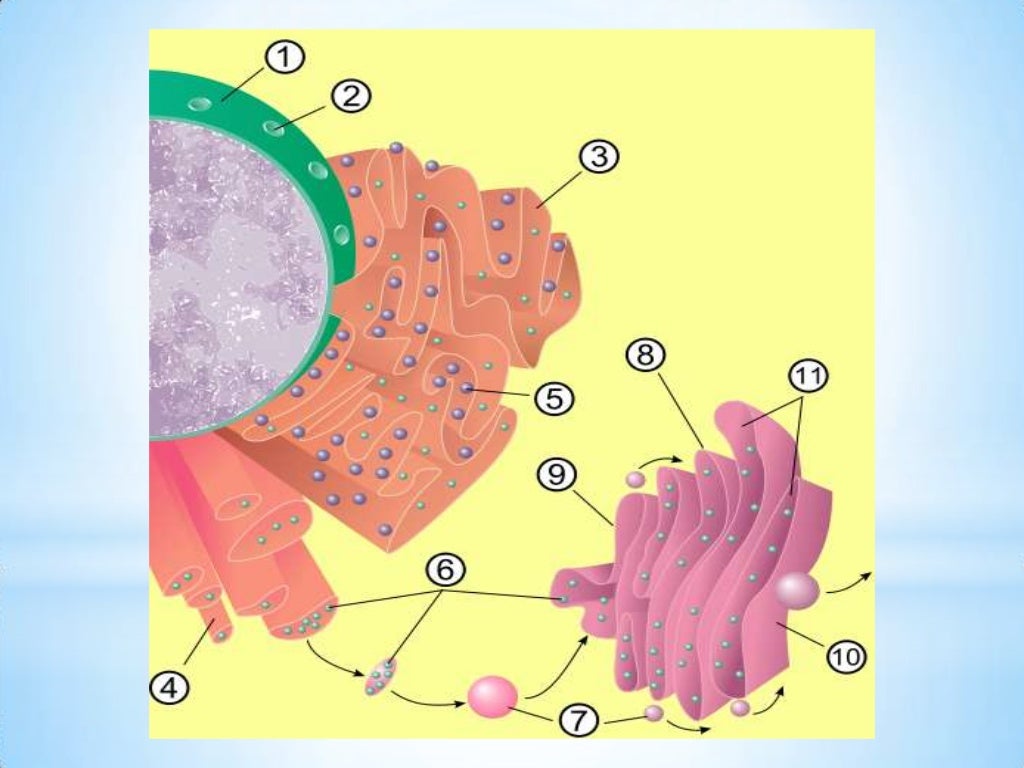
Golgi complex structure and functions
The Golgi apparatus is a central intracellular membrane-bound organelle with key functions in trafficking, processing, and sorting of newly synthesized membrane and secretory proteins and lipids. To best perform these functions, Golgi membranes form a unique stacked structure.
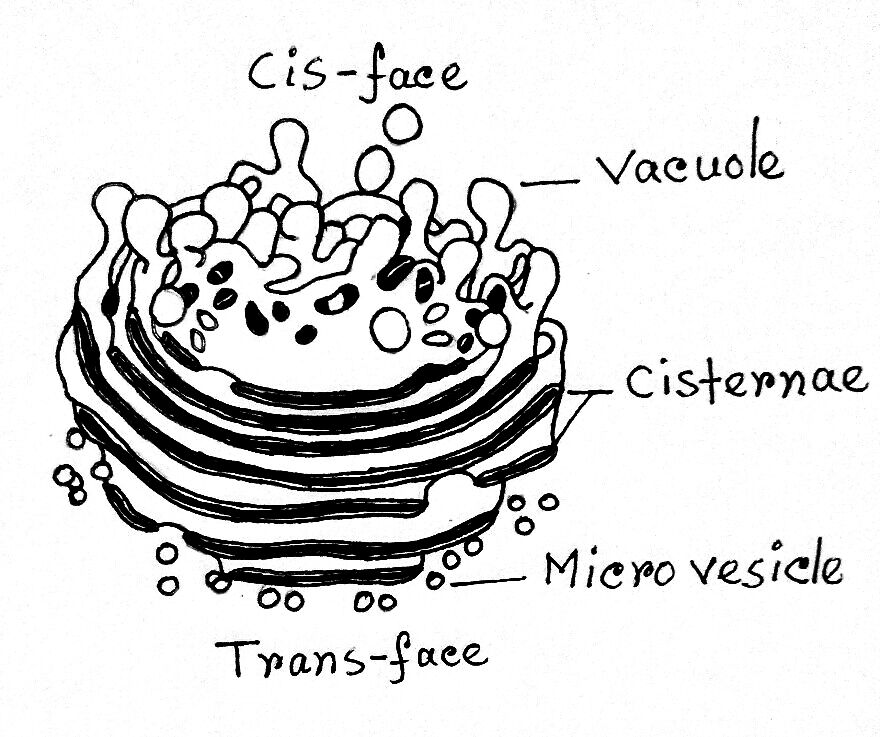
Golgi Apparatus Definition, Structure, Functions
2. Golgi bodies are found in almost all the animal and plant cells. 3. Cisternae, vesicles and vacuoles are the three major Darts of Golgi complex (Fig. 294). 4. Each component of a Golgi body is bounded by double membrane-outer and inner membrane with an inter-membranous space. 5. Both the membranes are about 60-70 Å thick.
.PNG)
Cell Types and Cell Structure Presentation Biology
In this video, we delve into the inner workings of a vital cellular organelle, the golgi apparatus, also know as golgi complex and golgi body. Join us as we.

Labelled Diagram Of Golgi Apparatus Gambaran
Figure: Diagram of the Golgi Apparatus Structure of Golgi Apparatus Under the electron microscope, the Golgi apparatus is seen to be composed of stacks of flattened structures that contain numerous vesicles containing secretory granules. The Golgi apparatus is morphologically very similar in both plant and animal cells.
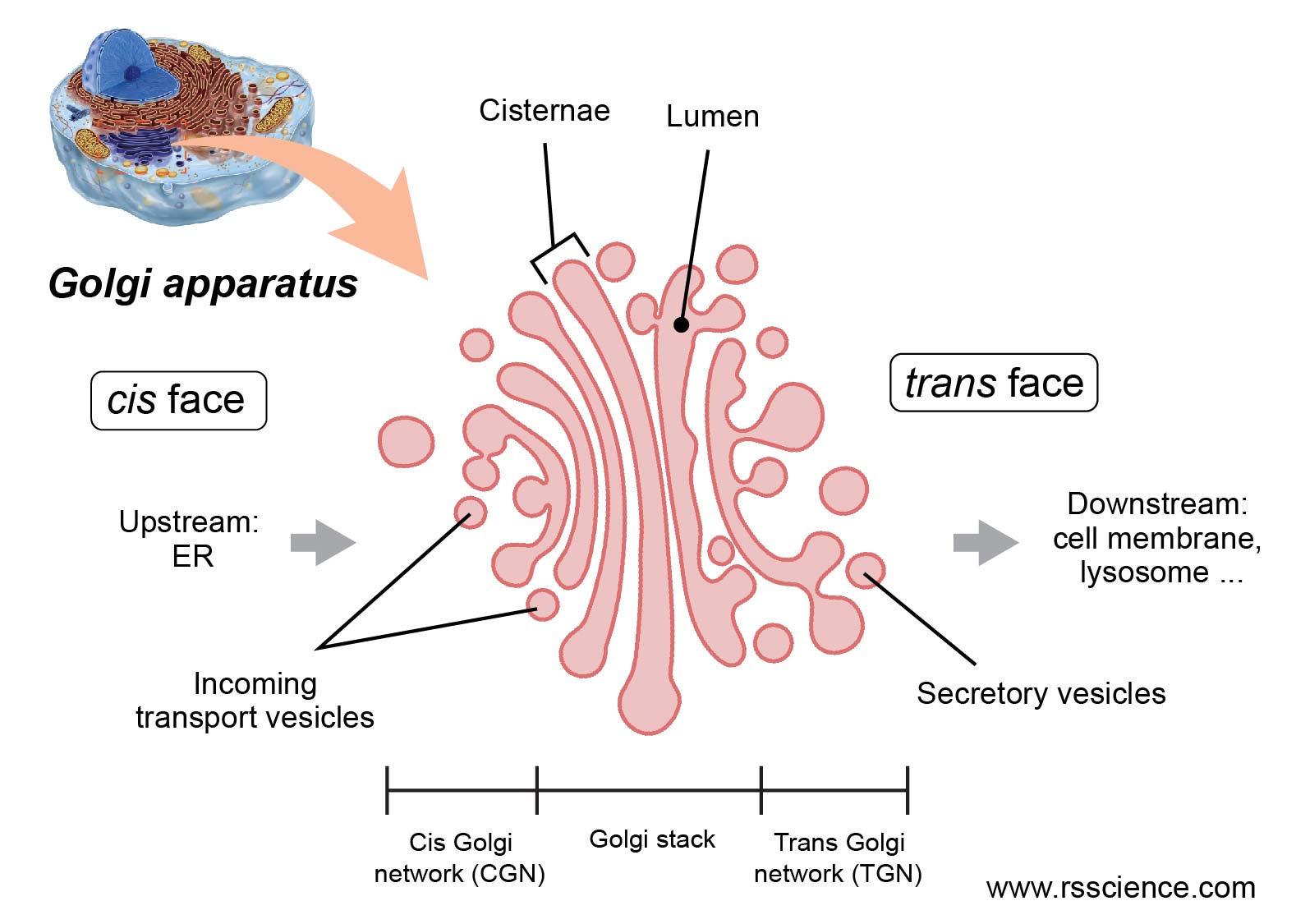
Golgi Apparatus Function the Post Office inside the Cells Rs' Science
The Golgi apparatus, often simply referred to as the Golgi, is a pivotal organelle within eukaryotic cells, first identified by the Italian physician Camilo Golgi in 1898. It is an integral component of the GERL complex and plays a central role in the secretion of various chemicals, notably proteins. Advertisements.

Golgi complex BrainBio
The Golgi body, also known as the Golgi complex, Golgi apparatus, lipochondrion, Barker's body, and Dalton complex, is a membrane-bound organelle predominantly found in eukaryotic cells. This complex structure was first observed in 1898 by Camillo Golgi, an Italian cytologist, in the nerve cells of owls and cats.
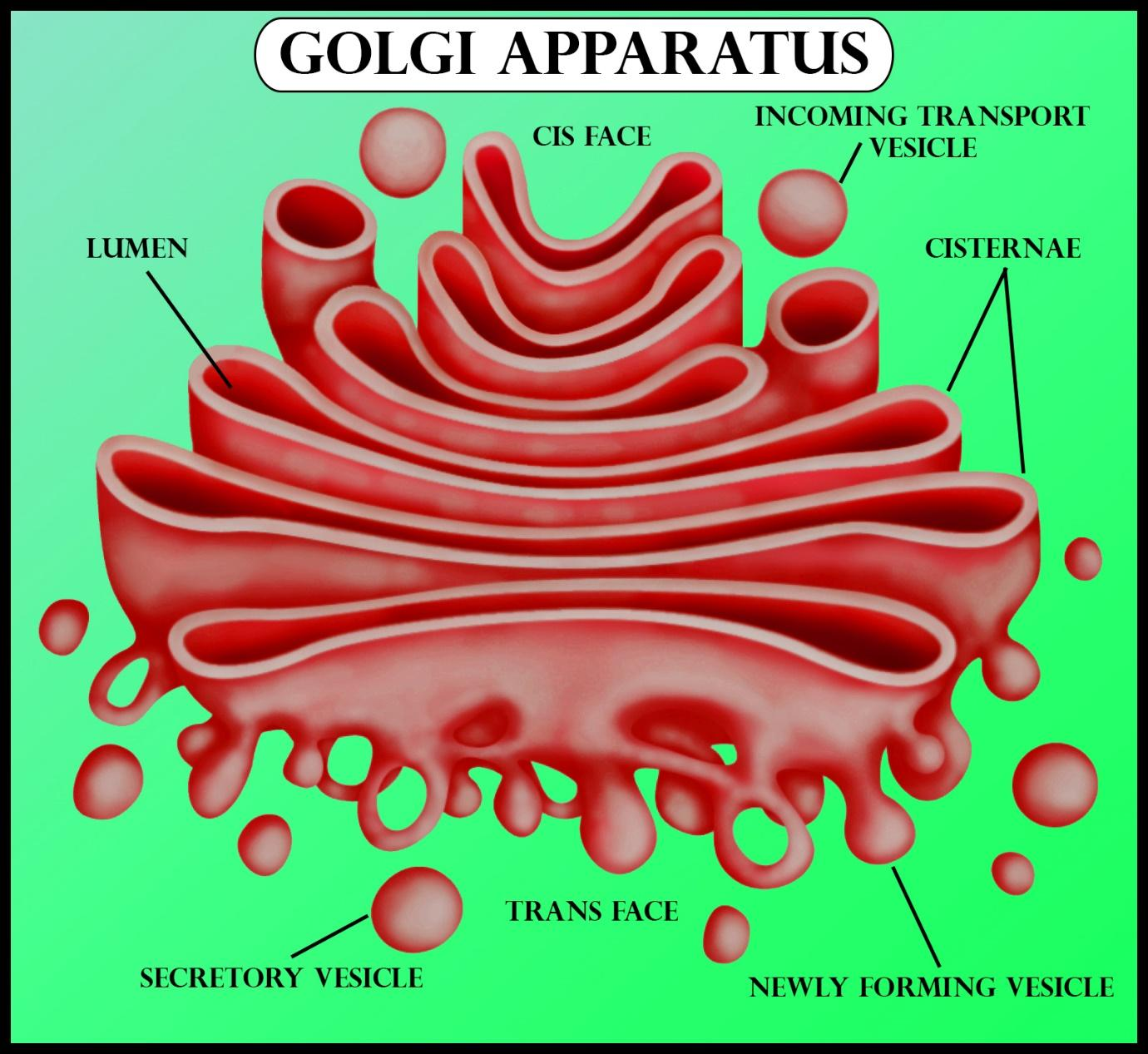
Which side of the Golgi apparatus has thin membranes?(a) Concave distal
Golgi Complex: Structure and Functions (With Diagram) Article Shared by ADVERTISEMENTS: In this article we will discuss about Golgi Complex that exist in all the cells of eukaryotes :- 1. Subject-Matter of Golgi Complex 2. Structure of Golgi Complex 3. Functions. Subject-Matter of Golgi Complex:
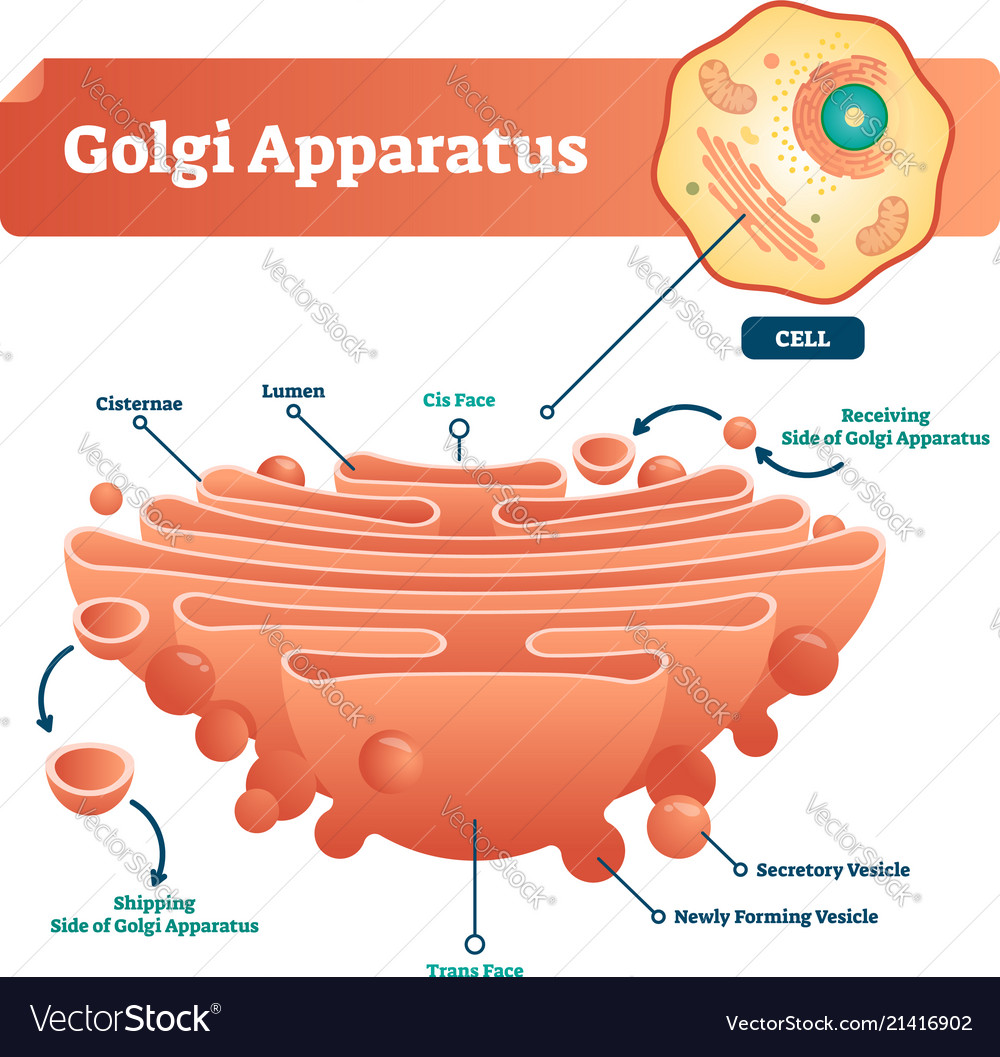
Golgi apparatus labeled scheme Royalty Free Vector Image
Scientists divide the Golgi body into three parts: the cisternae close to the endoplasmic reticulum, which is the cis compartment; the cisternae far away from the endoplasmic reticulum, which is the trans compartment; and the middle cisternae, called the medial compartment.
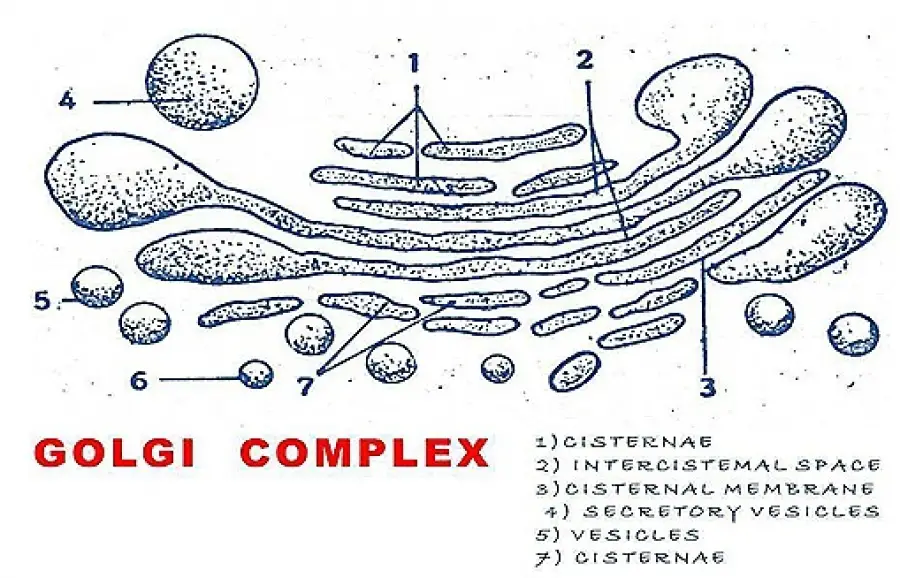
STRUCTURE AND FUNCTIONS OF GOLGI APPARATUS (GOLGI BODY)
Biology Article Golgi Apparatus Golgi Apparatus The Golgi apparatus has multiple names such as Golgi complex or Golgi body. The name is given on the name of the scientist, who discovered the organelle, i.e. Camillo Golgi. It is found in all the eukaryotic cells, plants as well as animals.
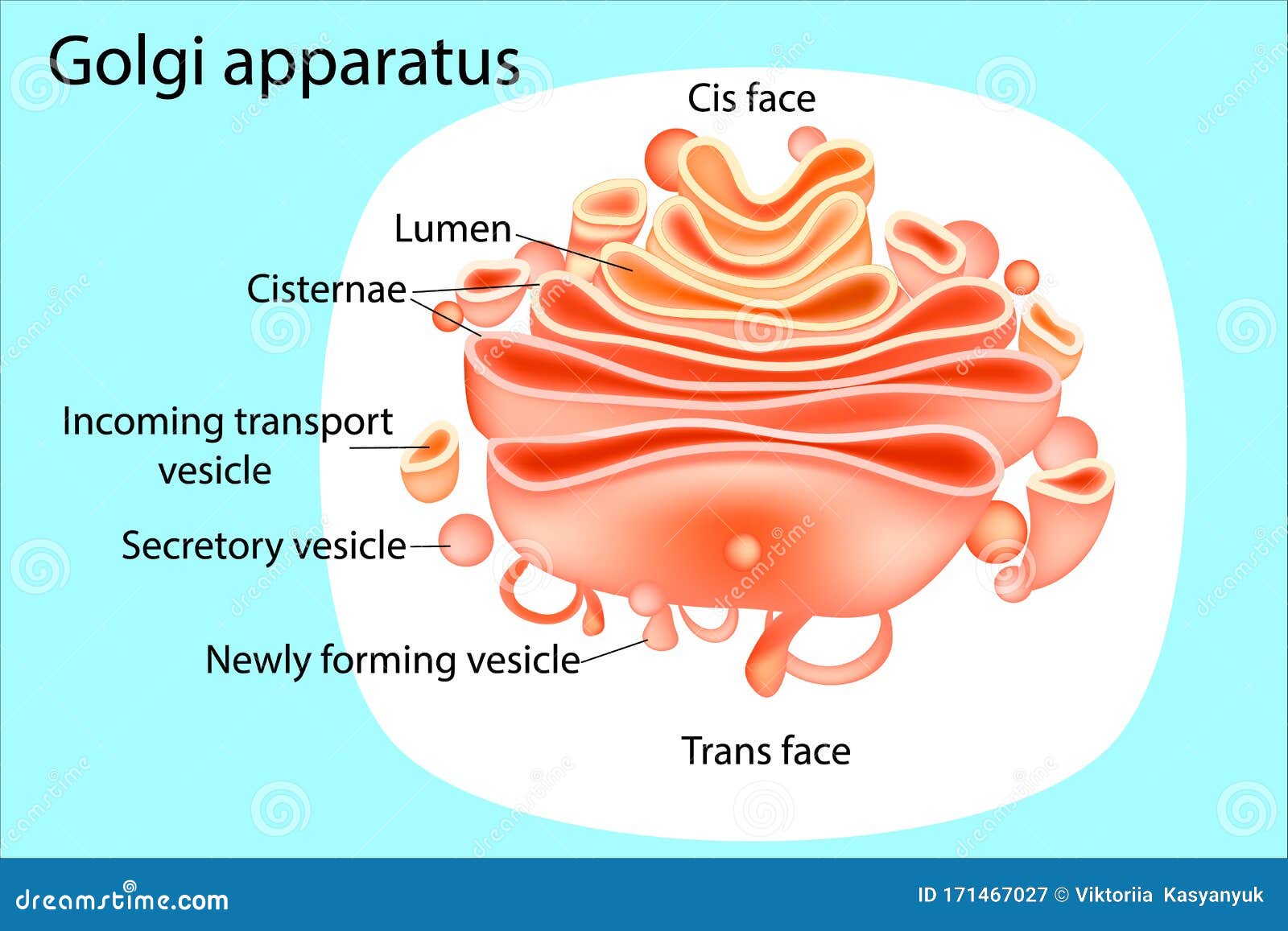
Golgi apparatus. Diagram stock vector. Illustration of drawing 171467027
Key Takeaways In eukaryotic cells, the Golgi apparatus is the "manufacturing and shipping center" of the cell. The Golgi apparatus is also known as the Golgi complex or Golgi body. A Golgi complex contains cisternae. Cisternae are flat sacs that are stacked in a semicircular, bent formation.
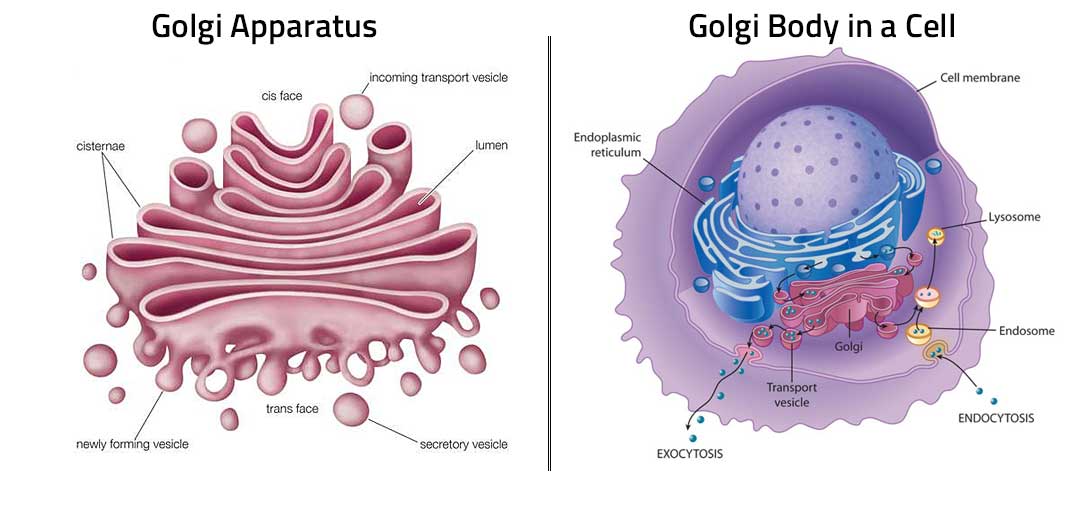
Golgi Apparatus Function Definition Structure Analogy
What is the Golgi apparatus? How was the Golgi apparatus discovered? How is the Golgi apparatus structured? Golgi apparatus, membrane-bound organelle of eukaryotic cells (cells with clearly defined nuclei) that is made up of a series of flattened, stacked pouches called cisternae.
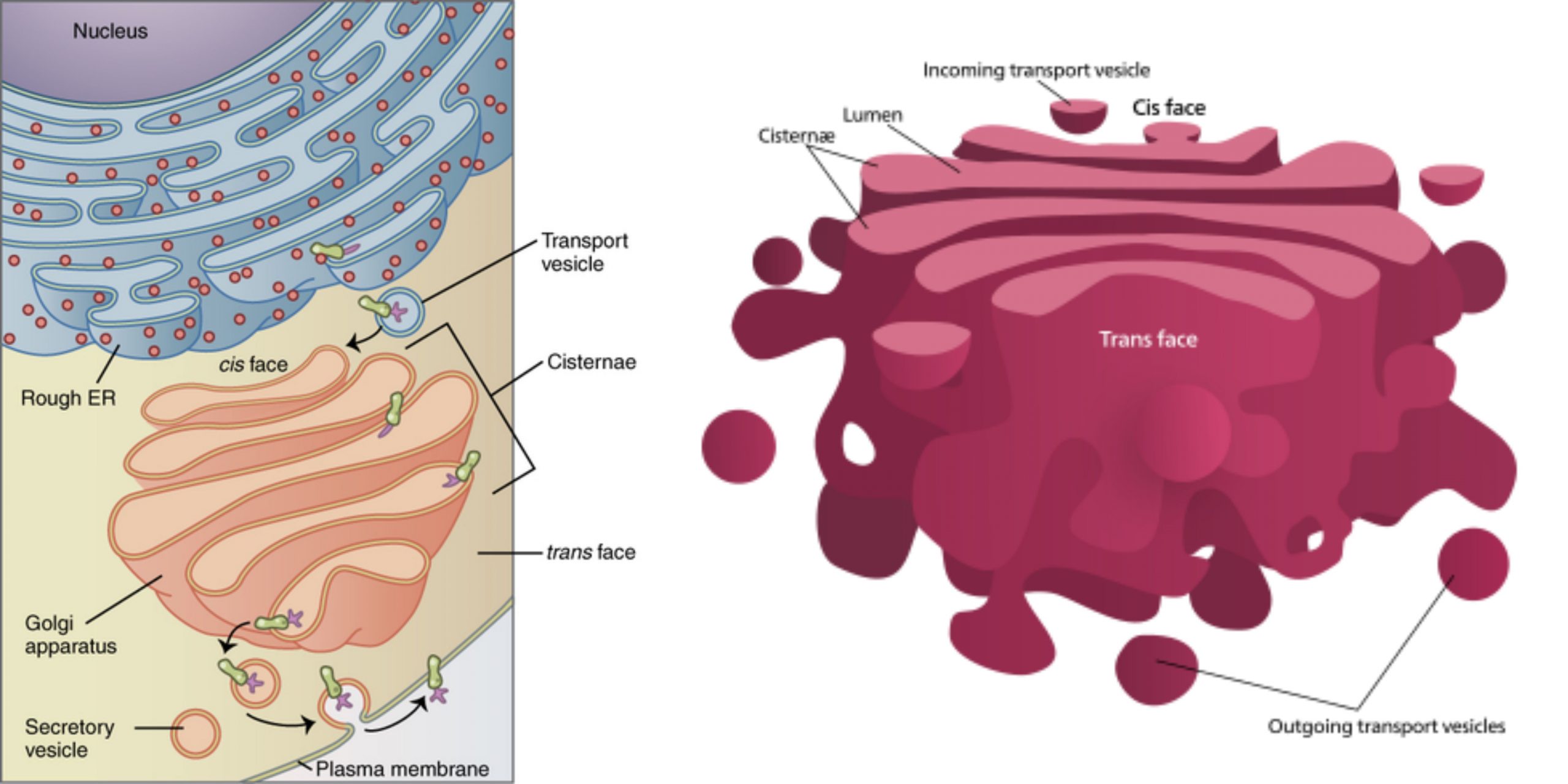
Golgi Apparatus Definition, Structure, Functions, and Diagram
2D and 3D Diagram of Golgi apparatus (Golgi bodies or Golgi complex) Functions of Golgi apparatus (Golgi bodies) Their primary function is to transport, modify and pack proteins and lipids into the Golgi vesicles to deliver them to their target sites. Animal cells contain one or more Golgi bodies while plants have a few hundred.
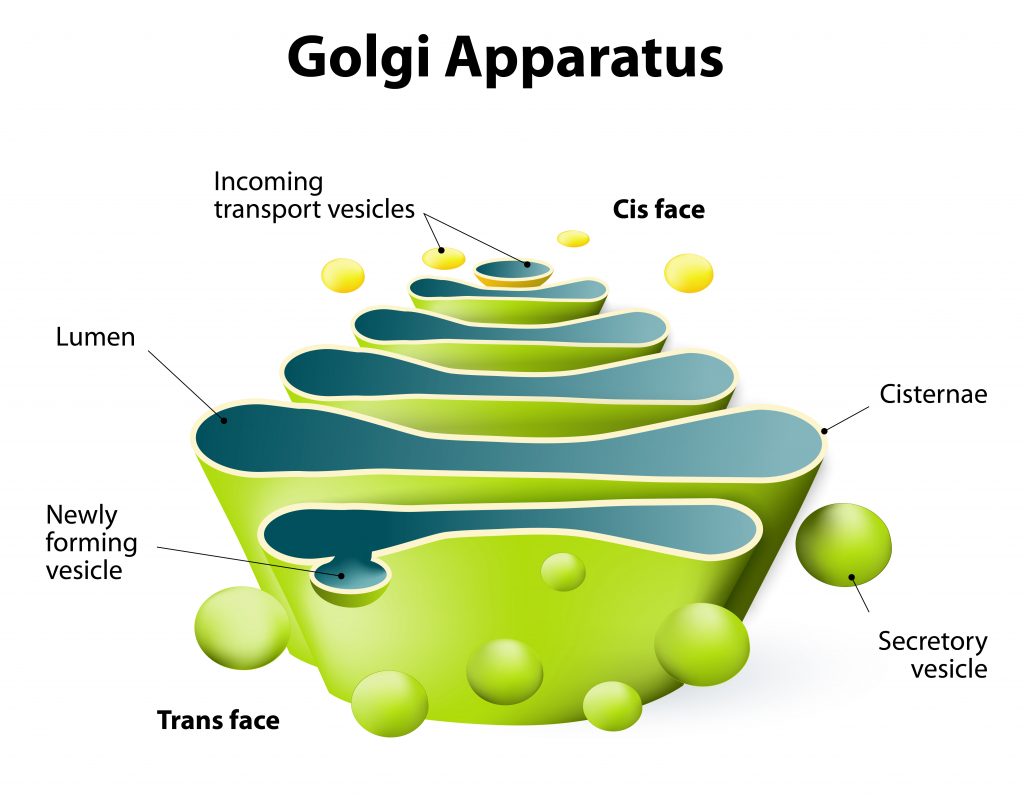
Cellen golgiapparaat Nationale Vereniging Nederland
The golgi apparatus is a membrane-bound organelle found in most cells. It is responsible for packaging proteins into vesicles prior to secretion and therefore plays a key role in the secretory pathway. In this article, we shall look at the structure and function of the golgi apparatus and its role in Wilson's disease. Structure

Aparato de Golgi y sus Funciones Areaciencias Aparato de golgi
The Golgi apparatus is comprised of a series of flattened sacs that extend from the endoplasmic reticulum. Golgi Apparatus Overview The main function of the Golgi apparatus is the ability to deliver vesicles, or packets of various cell products, to different locations throughout the cell.